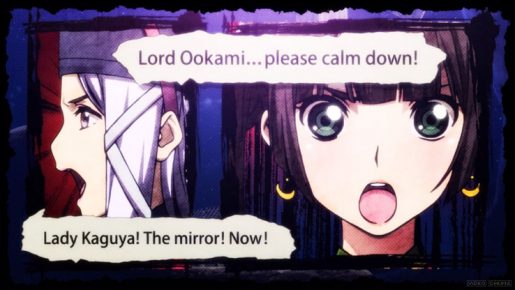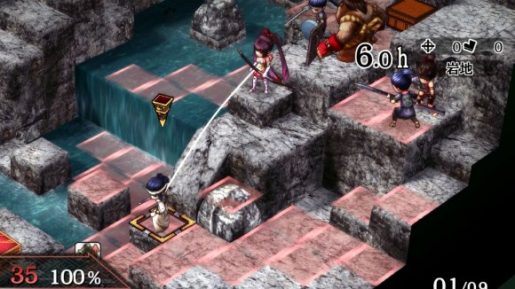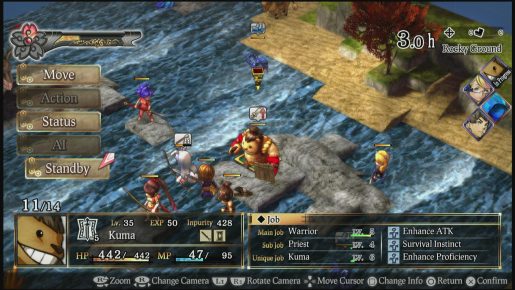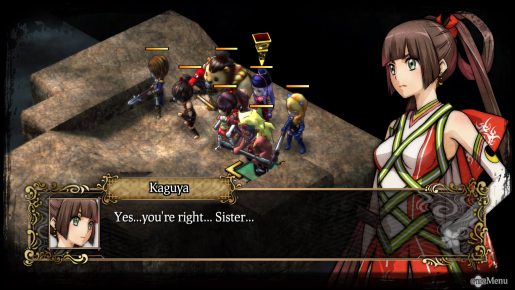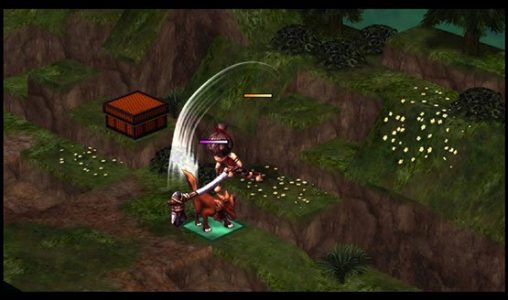One advantage to releasing a niche game, is you can essentially make the game you want. Unlike, say, Destiny, developers are free to add weird mechanics, goofy stories and unique experiences, because they’re not trying to capture a large portion of the market. In some ways this makes games like God Wars Future Past really exciting. Stories tend to go in unusual directions, memorable mechanics are implemented and they stand out in their own way. Here there is a strong emphasis on Japanese folklore, several playable classes, all in the form of a strategy RPG. Will this familiar formula prove to be successful or should they throw out the recipe?
God Wars Future Past starts by showing a gripping scene between Tsukuyomi and her younger daughter Sakuya. To appease the gods, Tsukuyomi decides to sacrifice Sakuya and bring an end to the natural disasters. Several years later, Sakuya childhood friend, Kintaro, saves her and gives her the courage to rebel against her fate and discover the reason Tsukuyomi offered to sacrifice her.
From there the story has some interesting bits and some touching moments, but it’s also filled with detours. At times it feels like the story is more interested in implementing folklore, a choice that some might enjoy, over explaining what her mother thought. This isn’t necessarily bad, as there is only so much that can be said about her mother before it grows stale, just that those without an interest in Japanese culture or folklore will probably not enjoy it.
Even if God Wars Future Past’s story has limited appeal, the gameplay is slightly better. It won’t take long for those familiar with tactical RPGs to get up and running. Characters have turns, based off speed, so enemies and allies will alternate throughout the phase, with every character having the ability to move and attack or defend during their turn.
What makes God Wars Future Past’s gameplay so bad, is that it’s not very intuitive. Things like defend are in a different menu with attack and it can be hard to position your characters. Disgaea addressed this by allowing you to select an attack and then move your character to the position you want them to be, but here you might need to reset your action to get the right position. Even this would be okay if the curser did basic things, like return to move. So if you move, attack and then reset, the curser will be set up to attack, even though you’ve returned to your original placement.
There are similar issues with the class system too. Every action, even using items or defending, yields some amount of experience and points to level up your class. Experience is used to level characters/classes, where as the class points are used to enhance a character’s ability in one of two ways.
Either it will unlock a new skill/attack or a passive ability, many of which can be future enhanced by using points to level that ability. Depending on what you level, it will also unlock additional skills, while leveling the class could potentially unlock other, more powerful classes.
At first it seems pretty straightforward. Select an ability, such as increase MP and then purchase it. This will let you use that as one of your limited passive perks, meaning you’ll often need to compromise if you want this or that. Skills are less restrictive, with the main concern being who or what you’re fighting. Sometimes you’ll want buffs, where as others certain elements are ideal. Using this to your advantage is a must if you want to be successful.
Since this is an RPG, there are also shops and gear. Much to God Wars Future Past’s credit, you can, for the most part, build characters how you want. The only downside is that it makes choosing the right equipment a little harder. Thankfully, you can choose to have the game select the best items for you.
Every character has four options, based off what you want them to do, for automatically selecting the best gear. So if you want to have Sakuya be ranged, you’d select that option, where as an up close fighter would choose front lines. Even though it can be a tad limited, like it won’t always use the weapons you want, it’s a good base to start with.
Despite having some good mechanics, the average fight is pretty boring. First and foremost, characters don’t have much in terms of attack animations. Shooting a fireball has the character shoot it, but you’ll just see them throw some fire and the enemy take damage or dodge. The character models also aren’t that great. Every character is really simple, a style that looks cute, but is forgettable in the long term.
On the Vita version, certain graphics, like the one that indicates something is new, looks extremely pixelated and poor. Typically, I can overlook these things, hence why I rarely talk about graphics, but this looks exceptionally bad at times. This isn’t even the worst choice God Wars Future Past makes.
As someone who prefers Japanese to English, I was happy to see God Wars Future Past supports both. However, those who don’t understand Japanese are essentially forced to use English. This is because the animated cutscenes lack subtitles. So unless you understand Japanese, you’re going to need to play in English or revisit these scenes to fully understand the story.
Verdict
God Wars Future Past is low budget tactical RPG and it shows. Between the simple graphics, low resolution icons and forget things like subtitles in the animated cutscenes, it makes for a hard sell. Combine this with a lackluster combat system and you have a game that relies almost entirely on story. For some, the cultural bits will be exhilarating, though without that love, it’s quite forgettable. This isn’t to say God Wars Future Past is outright terrible, just that it’s mediocre.
[Editor’s Note: God Wars Future Past was reviewed on PS Vita platform. The game was provided to us by the publisher for review purposes.]

